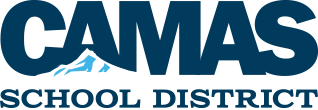Characteristics of Students Who Are Highly Capable
In Camas School District, our goal is to meet the unique learning needs, aptitudes and interests of all of our students. We recognize that highly capable students perform or show potential for performing at significantly advanced academic levels when compared with others of their age, experience, or environments. Outstanding abilities are recognized within students’ general intellectual aptitudes, specific academic abilities, and/or creative capabilities within a specific domain. Highly capable students are present in kindergarten through 12th grade throughout our schools and throughout all demographic groups.
Students who are highly capable show learning characteristics such as:
- Capacity to learn with unusual depth of understanding, to retain what has been learned, and to transfer learning to new situations;
- Capacity and willingness to deal with increasing levels of abstraction and complexity earlier than their chronological peers;
- Creative ability to make unusual connections among ideas and concepts;
- Ability to learn quickly in their area(s) of intellectual strength; and
- Capacity for intense concentration and/or focus.
Camas School District addresses the unique needs and aptitudes of our highly capable students through a continuum of services, from grade K through grade 12.
Highly Capable Program Goals
Gifted learners need a faster pace and an opportunity to explore concepts at a deeper level than is offered through the standard curriculum. They also need interaction with their intellectual peers. With this in mind, the learner-focused goals of the Camas School District Highly Capable Program are:
- To identify students who have high intellectual, academic, and creative thinking ability;
- To provide differentiated instruction appropriate to the needs of gifted learners;
- To place students among their intellectual peer group;
- To provide a quality program for eligible students at each school;
- To develop in students a sense of self, lifelong learning, quality production; and critical/creative thinking abilities.
Additional goals to support a strong program include:
- To engage in ongoing evaluation of students’ progress and placement;
- To provide appropriate professional development opportunities to maximize teaching effectiveness in differentiating for the academic and social/emotional needs of gifted learners; and
- To engage in ongoing program evaluation and revision.
Resources
Christopher Taibbi M.A.T. Gifted-Ed Guru
The Bright Child Vs. the Gifted Learner: What’s the Difference?
National Association for Gifted Children (NAGC)
Supporting Emotional Needs of the Gifted (SENG)
Washington Association for Educators of the Talented and Gifted (WAETAG)










